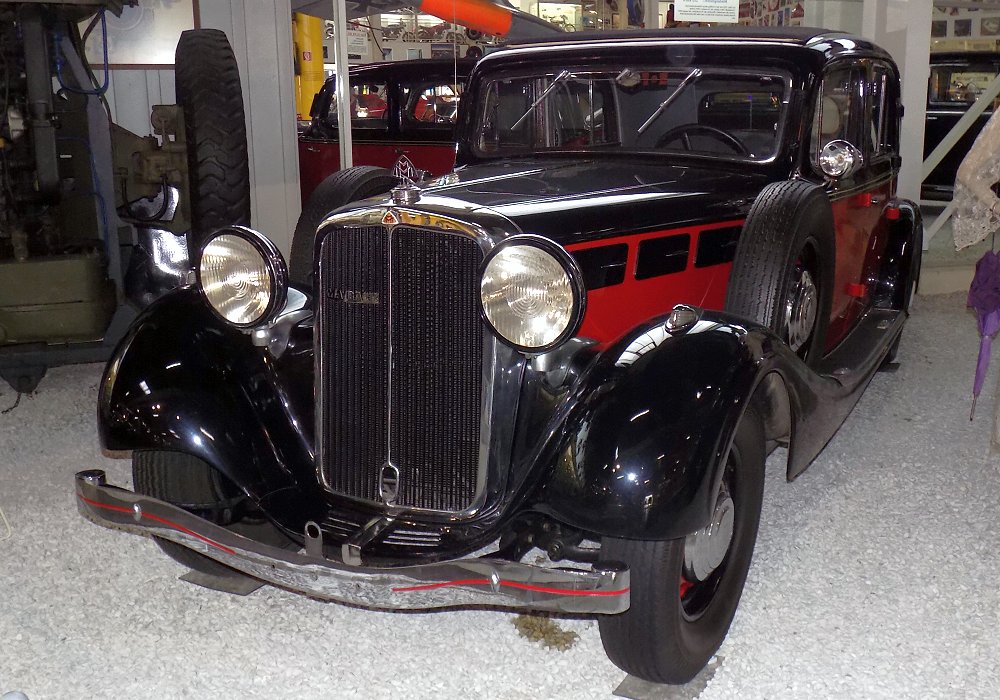Description
The Maybach SW 35, introduced in 1935, marked a major turning point for the marque as it transitioned from the enormous, chauffeur-driven W-series straight-six luxury cars of the 1920s into a new generation of refined, technically advanced, owner-driver automobiles. The “SW” designation stood for Schwingachse Wagen — a reference to the new independent rear-suspension layout that dramatically improved ride comfort and handling. With its sophisticated engineering, compact yet powerful supercharged straight-six engine, and custom coachbuilt bodies, the SW 35 became one of the most modern German luxury cars of the mid-1930s and a showcase of Maybach’s engineering brilliance prior to the war.
At the heart of the SW 35 was its 3.5-litre inline-six, an all-new engine developed to give Maybach the responsiveness and flexibility required for a slightly smaller, more sporting luxury car. Though less physically imposing than the huge 7-litre units used in earlier W-series models, the SW engine was technologically superior. Equipped with a Roots-type supercharger, it produced around 140–150 horsepower depending on final calibration, placing it among the most powerful mid-sized luxury engines of its era. The supercharger engaged via a clutch mechanism, providing strong torque for relaxed touring but delivering considerable extra power when needed. Smooth, refined and highly elastic, it gave the SW 35 genuinely modern performance.
One of the model’s most significant innovations was its chassis. The SW 35 introduced Maybach’s new independent rear suspension system, a swing-axle design that greatly improved ride quality and directional stability compared with the rigid axles used in earlier luxury cars. Combined with a robust box-section frame, independent front suspension and carefully tuned springing, the SW 35 handled considerably better than many of its contemporaries. The result was a luxury car with unexpectedly precise road manners — comfortable, composed, and enjoyable to drive, particularly by the standards of large 1930s automobiles.
Transmission was via Maybach’s well-developed semi-automatic system. Like other Maybachs of the period, the SW 35 used a sophisticated preselector-style gearbox paired with a torque-multiplying converter. This allowed seamless shifts without a clutch pedal in many situations, providing an exceptionally smooth and effortless driving experience. The system enhanced the SW 35’s appeal to owner-drivers by eliminating the heavy, complex gearchange motions typical of high-end cars of the time.
Maybach offered the SW 35 primarily as a chassis for custom coachwork, and the result was a wide array of elegant bodies crafted by some of Europe’s finest coachbuilders, including Spohn, Erdmann & Rossi, Hermann Ahrens at Horch, and a selection of exclusive German and Swiss ateliers. Customers commissioned everything from graceful two-door cabriolets to formal limousines, aerodynamic fastbacks, sporting coupés and luxurious four-door touring cars. Each example was a unique expression of the owner’s wealth and taste, built to an extraordinarily high standard with the finest materials available.
On the road, the SW 35 delivered an exceptional balance of performance and refinement. The supercharged engine gave it strong acceleration and excellent high-speed cruising ability, while the independent suspension ensured that the car rode smoothly even on poor pre-war road surfaces. Steering was steady and reassuring, and the braking system — large mechanical drums in early cars, later uprated — offered respectable stopping performance for a vehicle of its size and era. Testers of the period praised the car’s uncanny smoothness, advanced engineering and its effortless ability to maintain speed during long-distance touring.
Internally, the SW 35 reflected the highest standards of pre-war German craftsmanship. Interiors featured rich leathers, hand-polished wood veneers, sculpted seating, finely machined metal switchgear and optional comforts such as heater units, cigar lighters, intercom systems and elaborate instrumentation. The emphasis was on serene comfort and precise construction rather than flamboyance.
The SW 35 was the first in a series that would later include the larger SW 38 and SW 42. Together, these cars represented the final flowering of pre-war Maybach engineering before the company shifted toward wartime production. The SW 35 stands out not only as the originator of this technically advanced line but also as one of the most forward-thinking luxury cars of its time.
Today, the Maybach SW 35 is revered among pre-war enthusiasts and collectors for its engineering sophistication, its rarity, and its elegant coachbuilt forms. Surviving examples are scarce, and each one is a bespoke masterpiece from the golden age of German craftsmanship. The SW 35 remains a compelling reminder of Maybach’s commitment to innovation, refinement and mechanical excellence — qualities that cemented its status among the world’s greatest luxury manufacturers.

